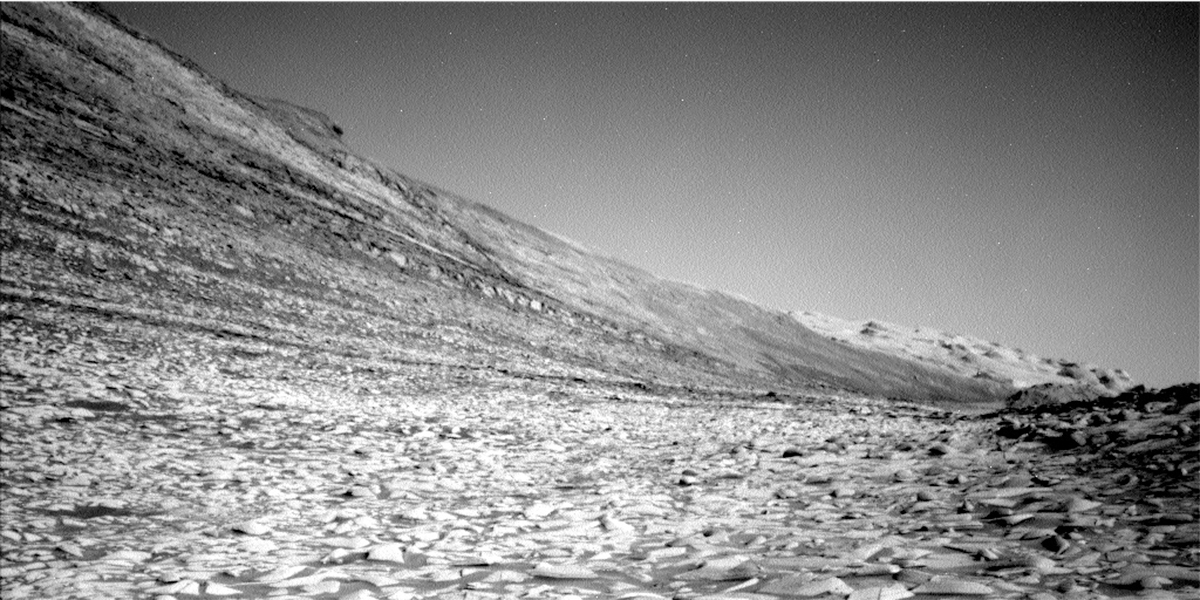3 min read

Earth planning date: Friday, January 26, 2024
Welcome to Spring in Gale Crater! The spring equinox in the southern hemisphere on Mars has arrived, beginning another potential global dust storm season. Martian southern summer, between now and September on Earth, is the time when all global dust storms on Mars have been observed to start. Although these huge atmospheric events are generally separated by many years, the last sky-darkening global Martian dust storm in 2018 ended the mission of our beloved Opportunity Rover. Starting now, Curiosity’s environmental science team is on alert to measure atmospheric dust levels more frequently throughout this season. We are also going to try another activity to move the filter wheel on the left Mastcam. The right Mastcam camera is still healthy and fully capable of doing its science, but the team wants to recover the wider field of view of the left camera.
Curiosity's contact science on "Sierra Columbine" and drive on sol 4078 completed successfully. On sol 4079, Curiosity will perform two dust removals, MAHLI microscopic imaging, and APXS composition measurements on nodular bedrock targets "Simpson Meadow" and "Lake Sabrina." The first target honors an expansive meadow, known for its dangerous trail crossing of the often raging Middle Fork Kings River in Kings Canyon National Park. The second is named for a spectacular, sheer-walled reservoir in the upper reaches of Bishop Creek Canyon, favorite of hikers, rock climbers, and trout. All targets in this area of Mount Sharp are named after the Bishop geological quadrangle in the High Sierra and Owens Valley of Calfornia, familiar to students of late Caltech geology Professor Robert Sharp. Mastcam will image the "Orinoco" butte behind Curiosity, as well as targets "Paradise Peak," "Big Arroyo," and some nearby troughs between the rocks. Mastcam and the ChemCam laser will also target "Minaret Vista," named for an iconic viewpoint near Mammoth Mountain which overlooks the San Joaquin River canyon in Devil’s Postpile National Monument. The ChemCam RMI telescope will map stratigraphy on the Kukenan butte. Atmospheric observations on this sol include a dust devil survey and an APXS measurement of argon and other atmospheric constituents. Curiosity starts Sol 4080 by completing science documentation of this stop with a ChemCam LIBS + Mastcam observation of "Pinchot Pass," a dark nodule named for an outstanding 12,000 ft alpine pass on the John Muir Trail. This is followed by a ChemCam passive sky and 10x1 RMI panorama of upper Gediz Vallis Ridge. Curiosity then will start driving, while simultaneously commanding the Mastcam left filter wheel to move. After the drive ends, Curiosity will perform its usual post drive panoramic imaging, and Mastcam will look for filter wheel motion with a left camera image. On the third sol of the plan (4081), ChemCam will perform a set of AEGIS observations at the new stop, followed by Navcam and Mastcam atmospheric dust opacity measurements, Navcam cloud movies, and a Navcam dust devil movie. On Monday, the Curiosity team will do contact science at the new location, then drive on. The attached image shows a Navcam image of our road ahead.
Written by Deborah Padgett , OPGS Task Lead at NASA's Jet Propulsion Laboratory







